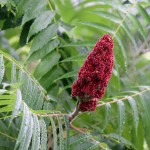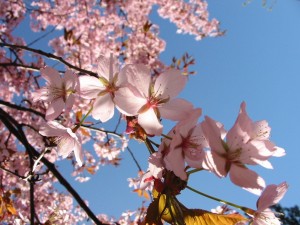Local Food
Last night, a friend sent me a Toronto Star article about the downward spiral of Whole Green Kids, an Ontario catering company that specializes in preparing organic, kosher and halal meals for children.
If the allegations are true, and this company has been passing off discount supermarket fare as homemade, wholesome and prepared according to religious traditions, it is a sad day for catering companies.
All the more reason to value the good ones that are out there!
Thanks to David Newland, of Roots Music Canada, for contributing this post.
With the celebration of springtime fully upon us, many folks are taking this time to count their blessings.
For me, two of the most important ones are food, and music. Both are nourishment: food for the body, music for the soul.
On weekend mornings, I love to head to my local farmer’s market whenever my schedule allows. I take a set amount of money out of the bank, grab my canvas shopping bags and a good strong coffee, and saunter off to browse through the wares.
What I’m looking for, I’ve realized, is not so much the basic sustenance my body needs – I could get that anywhere, and cheaply. The reason I go to the market is that I am seeking nourishment beyond nutrition.
Food that’s locally grown, for example, is important to me. So is being able to have a conversation with the person who produced it. So is knowing as much as I can about what goes into the food, the practices used to grow or raise it, the philosophy of the vendor, and so on.
At my local market, there’s more than food. There are crafts, there are activities for the kids, there’s nature, community, art, and education. Oh – and there’s a girl who plays the fiddle. Throw her a couple of bucks and she stops to thank you. When she’s not there, it feels like something is missing.

And that makes sense. Music and food, these these two basic blessings, share so much in common. Both are easily found – most people reading this post have more food, and more music, than they need. Yet both are frequently found in a form so watered down, the higher value has been lost. You can buy mass-produced music, just as you can buy mass-produced food, and it will perhaps fill your basic entertainment needs.
But the equivalent of a community market is where they both belong.
Mass production is to music as factory farming is to food. Perhaps a necessity, certainly a reality of ordinary life – but not the only way to experience this bounty.
It’s another thing entirely to enjoy music being played live in a decent environment, to shake hands with the artist, to hear your own concerns expressed, to feel your values have been respected, to appreciate the work that goes into making it, and to feel you are working with the artist – just as you might work with a farmer – in partnership around this great sustaining nourishment of the soul.
Music and food, mindfully made, are a natural pair.
Add family and friends and you have all the blessings of a perfect spring holiday weekend.
Here’s hoping you enjoy yours in happiness and health, in body and in spirit.
I’m beginning to realize there is food all around us.
Wild carrots. Wild leeks. Dandelions (of course). Bergamot. Cattails. Wild strawberries. Ostrich fiddle heads. The list goes on.
I had the pleasure of taking a wild edibles* class at Humber College last weekend. It doesn’t get more local than this – just walking around a field or wood, seeing what you find growing there naturally and eating it.
Of course, exactly what we consumed was closely guided by Dave Arama of WSC Survival School, who teaches the class.
The surprising thing was how delicious some of these foraged foods were! I am not kidding. The young needles of the tamarack tree, eaten as a type of candy by native peoples, had me leaving the group and going back for seconds. As for the leaves of the dogtooth violet, I was going for thirds and fourths.
One of my favourite trees, the staghorn sumac, has edible berries that you can eat (similar to a pomegranate, but fuzzy) or make into a type of lemonade (sumac-ade, I suppose).
It was an eye-opener. The tricky part is knowing how to distinguish between your tasty edibles and the poisonous look alikes. For that you either need to commit to the learnin’ or have an expert with you at your side.
Thanks David! It was fun. I’m looking at my surroundings a little differently now and looking forward to the next course on June 4!
*Course title: Edible Plants, An Introduction
It’s spring, right? And you want to know what’s in season in Ontario now.
Veggies:
Beets, cabbage, carrots, greenhouse cucumbers, greenhouse lettuce, mushrooms, onions, parsnips*, greenhouse peppers, rutabaga, sprouts, sweet potatoes and greenhouse tomatoes.
Fruits:
Apples and rhubarb.
According to Foodland Ontario, the above foods are “scheduled” for April. But with the slow spring we have this year, it might be better to expect them to arrive closer to May. All the same, it’s almost May so keep an eye out!
*Not a parsnip fan? Try this recipe given to me by my old CSA, La ferme de Bullion, in Québec. It’s surprising how eating a good-for-you, local food prepared in a new way can make you feel like a super star.
Parsnip Pancakes
4 cups parsnip peeled and cubed
2 eggs slightly beaten
1 onion finely chopped
1 tsp salt
1 tsp oil
1/2 cup finely chopped walnuts
1 tsp dried tarragon
2 cups breadcrumbs
Steam parsnips until tender (10-15 mins). Sauté onion in oil, add tarragon.
Mash parsnips; add onion, egg, salt and nuts and mix well. Form into 12 patties.
Coat with breadcrumbs. Bake at 350F for 20 minutes.
Mmm mm.
(Ontario garlic might make a good addition too.)
Good news, urban farmers are getting busy, despite the unspring-like weather.
Check out the Toronto Star article about Erica Lemieux from City Seed Farms and get inspired.
I had the pleasure of chatting with Erica at a Food Forward event a few months ago. She’s a local girl who was inspired by BC spin farms and decided to make things grow in Toronto backyards.
Good news is that she’ll be a speaker at Food Forward’s next Foodie drinks event, May 5 at Stella.
Please check out a wonderful post on Folks gotta eat about a new grant by the McConnell Foundation to help strengthen regional food economies.
This is inspiring stuff. We need it, and we need more of it.
Ever heard of the Doomsday Vault?
The Svalbard Global Seed Vault is located on the remote island of Spitsbergen, Norway. It’s a backup should anything happen to seeds currently being saved in traditional genebanks — a type of safety net against loss of diversity.
Sounds like a good enough idea, right? If calamity strikes, be it natural or man-made, we have something to go to, a plan B.
But as Genevieve Grossenbacher of Seeds of Survival, mentioned at the 2011 Organic Grower’s Conference, who is going to have access to those seeds in an eventual disaster?
Will you? Not likely. Nor will I.
With the free exchange of seeds now being further threatened by Canada’s Comprehensive Economic Trade Agreement with the EU (more on CETA at the National Farmers Union), it’s high time we expand our love of local food to include local seeds.
Local seeds are adapted to the local environment. They have evolved over thousands of years to grow and flourish in a specific location with specific growing conditions. Local seeds produce the best, most resilient, most nutritious local food and are the best seeds to plant -– and to save.
It’s spring. Plant your herbs and your veggies, but plan to save a few seeds from your harvest for next year. All you need is an empty clean jar.
More info on seeds and seed saving:
Seeds of Diversity
Guelph Centre for Organic Farming
Urban Harvest
It’s another new year and some of you might have decided to entertain a resolution or two. After avoiding such things for the past several years, I decided to creep into 2011 on a quieter, more contemplative note and have come up with a few priorities for myself.
On the topic of changing habits, and of course, more specifically, food habits, check out the TedxHart House lectures of last month, The Future of Food.
Jason Qu, recent graduate and coordinator of U of T’s campus agriculture program, discusses campus food initiatives, and suggests a more holistic approach to food is the starting point that will stick.
The Secret Classroom
Lauren Baker, Director of Sustain Ontario, discusses changing the farming system and creating more opportunities for the little guy. Here, here!
10 Good Food Ideas
I can’t find the lectures of the other speakers, Dan Donovan (chef and product developer for Ontario’s Own), and chefs Jeffrey Crump and Bettina Schormann, of Ancaster Mill.
If anyone has those links, please share!
Bonne année!

I dropped by The Sweet Potato last Friday and had a chance to chat a bit with Tracy from LocalFoodPlus. LFP has expanded! They have gone national and are now certifying farmers in Québec, British Columbia and Manitoba, in addition to Ontario. Nice!
To help promote LFP and support local farmers and suppliers, not to mention eat some tasty, fresh, local food, take the LFP pledge to shift $10 of your food budget to certified local sustainable food.
Better yet, go visit the folks from LFP yourself and sign up at these locations:
• Bonne Vie – Dec. 9th, 1:00 pm-6:00 pm
• Wholesome Market – Dec. 17th, 4:00 pm-7:00 pm and Dec. 18th, 11:00 am-4:00 pm
• Fiesta Farms – Every Saturday and Sunday in Dec., 11:00 am-4:00pm
If you’re lucky, they might even give you a handy button to decorate your winter coat.
Cool green fun fact!
As of the time I’m writing this, 2634 people have taken the LFP pledge,? reducing greenhousegases by 263 cars, and creating 26 new jobs!
Local, yes. Sustainable, no way.
Attending the Royal Winter Fair last Sunday was a rude reminder of the reality of mainstream farming.
Sorry to be a downer, but I saw plenty not to be happy about: University of Guelph food geneticists, pesticide companies claiming environmental stewardship, corn fed beef, (not to mention the usual bad coffee).
Whine whine. Gripe gripe.
At first glance, the Royal Agricultural Show is a great thing. The farm comes to the city and the farmers, at least on the surface, get the recognition they deserve.
But the fair is steeped in traditions (horseshows, auctions, biggest zucchini) that belie the dire situation of the farmers and their absolute dependence on the pharmaceutical companies who lord over them — a tradition in itself, unfortunately.
I came across some slick marketing materials by so-called pest controllers that use clever omissions in their copy to convince us that using pesticides, herbicides, fungicides and chemical fertilizers is not only necessary for plant growth, but actually improves soil quality and preserves wildlife habitats.
Come again?
I have nothing against the farmers. They’re caught in a cycle of chemical dependence that began after WWII and it is bleeding them dry. But seriously, does the Royal Winter Fair have to add insult to injury by having the very same forces that are destroying our food supply, our soil and our waterways claim the high road as saviour of these very things?
I thought this event was for the farmers.
Whine whine. Gripe gripe.




